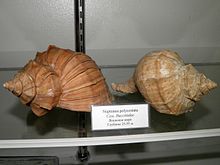질병군집
Disease cluster질병 클러스터는 특정 지리적 위치나 기간 내에 비교적 흔치 않은 의료 상태나 사건이 비정상적으로 큰 집합이다.[1]클러스터의 인지도는 그 크기가 운명의 장난에 의해 기대되는 것보다 더 큰 것으로 보이느냐에 따라 달라진다.[1]의심스러운 질병 집단의 확인은 처음에는 일화적인 증거에 의존할 수 있다.[1]역학학자들과 생물통계학자들은 의심스러운 군집이 그 지역의 질병의 실제 증가와 일치하는지 여부를 평가할 필요가 있다.[1]일반적으로 클러스터가 인정되면 해당 지역의 보건부서에 보고된다.[2]클러스터가 충분한 크기와 중요성을 갖는 경우, 발생으로 재평가될 수 있다.[citation needed]
존 스노우가 1854년 런던 소호에서 발생한 콜레라 발병에 대해 선구적으로 조사한 것은 이런 성단을 연구하는 전형적인 사례로 보인다.[citation needed]
참조
- ^ a b c d Miquel Porta, ed. (2008). A Dictionary of Epidemiology. Oxford University Press, USA. pp. 42–43. ISBN 978-0-19-971815-3.
Aggregations of relatively uncommon events or diseases in space and/or time in amounts that are believed or perceived to be greater than could be expected by chance. Putative disease clusters are often perceived to exist on the basis of anecdotal evidence, and much effort may be expended by epidemiologists and biostatisticians in assessing whether a true cluster of disease exists.
- ^ "Guidelines for Investigating Clusters of Health Events". www.cdc.gov. Archived from the original on 21 March 2021. Retrieved 21 March 2021.

